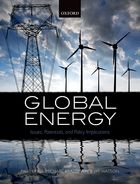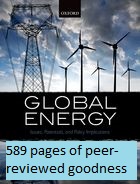From China’s 2014 energy statistics:
- New renewable capacity outstripped new coal capacity;
- additional output from renewables (the increase in output in 2014 over 2013) was greater than the total output from nuclear;
- total generation from hydro, wind and solar all went up;
- total generation from fossil thermal plant went down;
- coal & gas consumption for electricity went down.
And so to the detail.
Half of the 104 GW of new capacity is renewables; 47 GW is thermal plant (predominantly coal and fossil gas) and 5 GW is nuclear. 22GW of the renewable capacity is hydro, 20 GW wind, and 11 GW solar.
I’ve updated this post on 2015-03-12 with the more specific statistics now available from China.
Generation from wind increased to 17.88GW (average electricity production) this year, from an estimated 16GW last year. Hydro generation increased by about 17% to 122 GW. China now has 27 GW of grid-connected solar capacity, and 20 GW of nuclear capacity.
Output from thermal (coal & gas) plants dropped in 2014, because although thermal plant capacity increased by 5.9%, this was outweighed by the relative decrease of 6.3% in its capacity factor (from 57.3% to 53.7%, an absolute change of -3.6%, which is a relative change of -6.3%). In addition, the efficiency of coal & gas plants went up, meaning that the consumption of coal & gas for electricity generation decreased in 2014.
Total electricity generation was about 632 GW, of which 476 GW was thermal, 122 GW was hydro, 17.8 GW was wind, 14.4 GW was nuclear, and 2.6 GW was solar.
So coal & gas generation decreased slightly; hydro generation increased by about 17 GW; solar generation increased by about 1 GW; and wind generation increased by about 2 GW; giving a net increase in renewables generation of about 20 GW.

